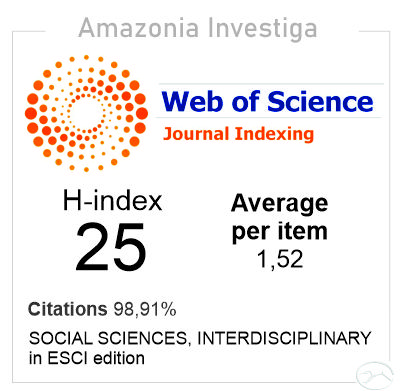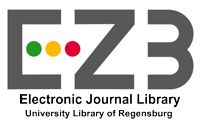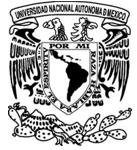Sustainability of a regional investment strategy: factors of a digital economy
Mots-clés :
Investments in fixed assets, digital economy, regional development, correlation analysis, economic development.Résumé
In modern conditions, investment activity is of particular importance in economic development. The nature and structure of investments in fixed assets affect the implementation of a sustainable investment strategy in a region. Therefore, the aim of this study is to assess the factor impact of the digital economy on the dynamics of attracting investment in fixed assets. The empirical base of this study is compiled from statistical data (a case study of Russian regions for 2015-2017). Based on the correlation analysis, the factors have been differentiated according to the degree of their influence on the processes of investment activity. The results obtained confirm the main hypothesis, according to which: the regions developing the factors of the digital economy have higher dynamics and volumes of attracting investments in fixed assets. It has been established that factors such as the specific number of personal computers in organizations and the level of use of electronic document exchange have a stable relationship with the dynamics of attracting investments. The factor of using local computer networks does not have a significant impact on the processes of investment activity in a region. The practical significance of this study is to clarify the strategic priorities for the development of digital infrastructure, including activation of the investment activity in Russia’s regions. Further research prospects are associated with a more detailed analysis of digitalization trends, an assessment of their impact on the efficiency of investments in fixed assets in a region’s economy, and an optimization of the management system for these processes.
Téléchargements
Références
Ansong, E., & Boateng, R. (2019). Surviving in the Digital Era – Business Models of Digital Enterprises in a Developing Economy. Digital Policy, Regulation and Governance, 21(2), 164-178. https://doi.org/10.1108/DPRG-08-2018-0046
Antanavi?iene, J. (2014). Foreign Direct Investment: Driving Factors and Outcomes for Secure and Sustainable Development. Journal of Security and Sustainability Issues, 3(3), 55-67. https://doi.org/10.9770/jssi.2014.3.3(5)
Balashova, K.V., & Alekseev, A.L. (2018). Instrumentary Expert Evaluation of Innovation Projects and Technologies. Radio Industry, 2, 99-104. https://doi.org/10.21778/2413-9599-2018-2-99-104
Bilir, L.K., Chor, D., & Manova, K. (2019). Host-Country Financial Development and Multinational Activity. European Economic Review, 115, 192-220. https://doi.org/10.1016/j.euroecorev.2019.02.008
Borsuk, N.A., Fedorova, V.A., & Minina, A.D. (2018). Efficiency of Documentation Flow at Scientific and Engineering Enterprises. Radio Industry, 28(3), 99-106. https://doi.org/10.21778/2413-9599-2018-28-3-99-106
Cascio, W.F. (2017). Training Trends: Macro, Micro, and Policy Issues. Human Resource Management Review, 29(2), 284-297. https://doi.org/10.1016/j.hrmr.2017.11.001
Egorov Yu.O. (2015). The Influence of Regional Factors on the Development of the Investment Climate. Bulletin of Udmurt University. Series Economics and Law, 25(1), 37-43.
Fedorkov, A.I., & Yanovsky, V.V. (2017). Innovative Development Trends in the Field of Culture: Investment, Efficiency, Digital Economy. Petersburg Economic Journal, 3, 44-52.
Ishkhanyan, M.V., & Karpenko, N.V. (2016). Econometrics. Part 1. Pair Regression: Workbook. Moscow: Moscow State Transport University (MIIT). (p. 117).
Kamar, B., Bakardzhieva, D., & Goaied, M. (2019). Effects of Pro-Growth Policies on Employment: Evidence of Regional Disparities. Applied Economics, 51(40), 4337-4367. https://doi.org/10.1080/00036846.2019.1591596
Kazancheva, Kh.K., & Kilchukova, A.L. (2017). Prospects for Strategic Management of the Region’s Economy under the Conditions of Knowledge Asymmetry in the Realities of the Digital Economy. Bulletin of Kabardino-Balkarian Scientific Center of the Russian Academy of Sciences, 6-1(80), 143-151.
Khoroshavina, N.S. (2017). Venture Financing – the Basis of a Digital Economy. Issues of the Regional Economy, 4(33), 84-94. https://doi.org/10.21499/2078-4023-2017-33-4-86-94
Kokovikhin, A.Yu. (2016). Mechanisms and Institutions of Human Resource Management in the Formation of the Investment Climate at the National and Regional Levels. Bulletin of the Ural State University of Economics, 5(67), 100-110.
Kucharcíková, A., Tokarcíková, E., Klucka, J., & Konušíková, J. (2015). Foreign Direct Investment: Impact on Sustainable Development in Regions of Slovak Republic. Journal of Security and Sustainability Issues, 5(1), 59-71. https://doi.org/10.9770/jssi.2015.5.1(5)
Nambisan, S., Wright, M., & Feldman, M. (2019). The Digital Transformation of Innovation and Entrepreneurship: Progress, Challenges and Key Themes. Research Policy, 48(8). https://doi.org/10.1016/j.respol.2019.03.018
Ohotina, A., Lavrinenko, O., Gladevich, J., & Lazdans, D. (2018). The Investment Climate in Latvia's, Lithuania's and Belarus's Cross-Border Regions: The Subjective-Objective Assessment. Entrepreneurship and Sustainability Issues, 6(2), 767-780. http://doi.org/10.9770/jesi.2018.6.2(20)
Orekhova, S.V., & Kuzmin, E.A. (2017). Resource Investment Model in Specifics of Developing Countries. Advances in Economics, Business and Management Research, 38, 488-494. https://doi.org/10.2991/ttiess-17.2017.80
Pinkovetskaya, Yu.S. (2017). Analysis of Investments in Fixed Assets of Small and Medium-Sized Enterprises. Bulletin of Tula State University. Economic and Legal Sciences, 2-1, 87-95.
Ponomarev, V.A., & Petrov, M.V. (2019). Territorial Interaction Is the Basis for the Development of a Small Innovative Enterprise and Other Territorial Enterprises. Radio Industry, 29(1), 61-66. https://doi.org/10.21778/2413-9599-2019-29-1-61-66
Pryadko, I.A., Bryukhovetskaya, O.V., Danilin, I.A., & Melkonyan, A.V. (2018). Problems of Attracting Private Investment in the Development of the Digital Economy of the Russian Federation. Management of Economic Systems: Electronic Scientific Journal, 10(116), 34.
Rakhimov, T.R. (2007). Current Assessment of the Investment Climate at the Regional Level. Bulletin of Tomsk State University, 300-2, 65-68.
Richter, C., Kraus, S., Durst, S., & Giselbrecht, C. (2019). Digital Entrepreneurship: Innovative Business Models for the Sharing Economy. Creativity and Innovation Management, 26(3), 300-310. https://doi.org/10.1111/caim.12227
Rokunova, O.V., & Angelova, O.Yu. (2013). Building Models for Analyzing the Effectiveness of Investments in Fixed Assets during the Modernization of Enterprises. Bulletin of Lobachevsky Nizhny Novgorod University, 4-1, 275-281.
Rubaeva, O., Pogartseva, E., Kot, E., & Nikitina, T. (2018). Resources Provision of Rural Territories Social Sphere: A Case Study. Journal of Environmental Management and Tourism, 9(7), 1512-1524. https://doi.org/10.14505//jemt.9.7(31).15
Santos, A. (2019). Do Selected Firms Show Higher Performance? The Case of Portugal's Innovation Subsidy. Structural Change and Economic Dynamics, 50, 39-50. https://doi.org/10.1016/j.strueco.2019.04.003
Shuyan, L., & Fabuš, M. (2019). Study on the Spatial Distribution of China's Outward Foreign Direct Investment in EU and Its Influencing Factors. Entrepreneurship and Sustainability Issues, 6(3),1080-1096. http://doi.org/10.9770/jesi.2019.6.3(16)
Sibirskaya, E.V., Oveshnikova, L.V., Mikheykina, L.A., Bezrukov, A.V., & Grigoryeva, M.O. (2016). Statistical Analysis of Investment Activity of the National Economy. Economics and Entrepreneurship, 10-2(75), 760-765.
Šimelyte, A., & Antanavi?iene, J.G. (2013). Foreign Direct Investment Policy as an Instrument for Sustainable Economic Growth: A Case of Ireland. Journal of Security and Sustainability Issues, 2(4), 25-34. https://doi.org/10.9770/jssi.2013.2.4(3)
Starodubtseva, E.B., & Markova, O.M. (2018). Digital Transformation of the World Economy. Bulletin of Astrakhan State Technical University. Series: Economics, 2, 7-15. https://doi.org/10.24143/2073-5537-2018-2-7-15
Strizhkova, L.A. (2016). Using Input-Output Tables to Assess the Dependence of the Russian Economy on Imports and Import Substitution Processes. Statistics Issues, 5, 3-22.
Tarchokova, A.A. (2019). Features of the Formation of the Investment Attractiveness of the Indian Economy in the Process of Innovative Development. Intellect. Innovation Investments, 1, 58-64. https://doi.org/10.25198/2077-7175-2019-1-58
Valenduc, G., &Vendramin, P. (2017). Digitalisation, between Disruption and Evolution. Transfer, 23(2), 121-134. https://doi.org/10.1177/1024258917701379
Yakutin, Yu.V. (2017). The Russian Economy: A Digital Transformation Strategy (Toward a Constructive Critique of the Government Program “The Digital Economy of the Russian Federation”). Management and Business Administration, 4, 27-52.
Zavarzin, A.V. (2018). Prospects for Blockchain Technology in the Context of Increasing Social Welfare. Bulletin of North Caucasus Federal University, 3(66), 76-84.
Zubarev, A.E. (2017). Digital Economy as a Form of Manifestation of Patterns of Development of the New Economy. Bulletin of Pacific State University, 4(47), 177-184.

































































.gif)






